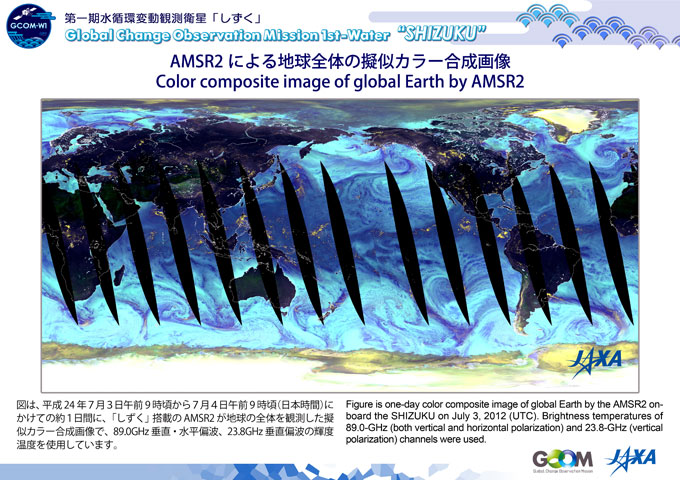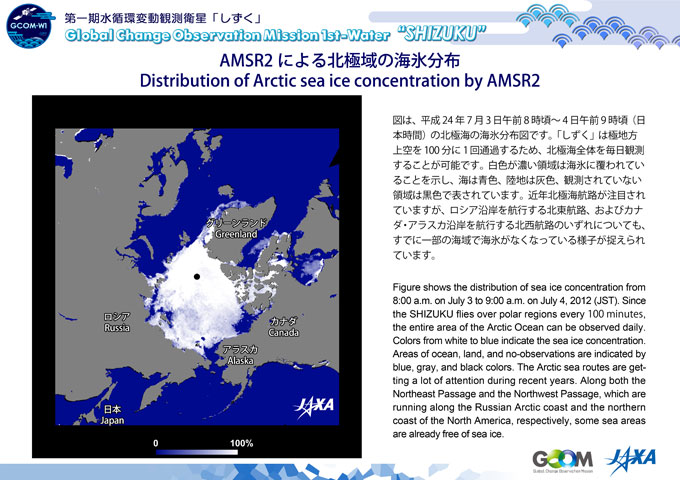Yesterday, the Japan Aerospace Exploration Agency (JAXA) released first-light imagery from the new AMSR2 instrument on JAXA’s GCOM-W1 satellite (“Shizuku”), which replaces the AMSR-E instrument which failed last fall on NASA’s Aqua satellite after 9+ years of observation.
The Shizuku satellite has been successfully boosted into the NASA A-Train satellite constellation, and the AMSR2 spin rate has been increased to its operational value of 40 rpm.
The following two images are not meant to be science-quality, only to demonstrate the instrument is operating as expected:
Operational products from AMSR2 should start flowing in August.

 Home/Blog
Home/Blog





